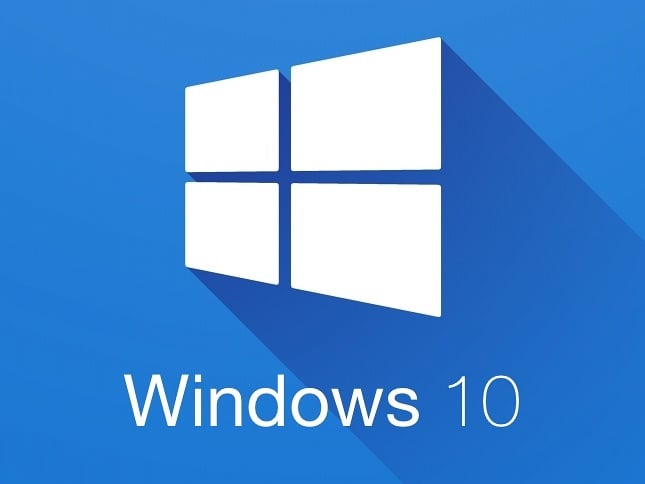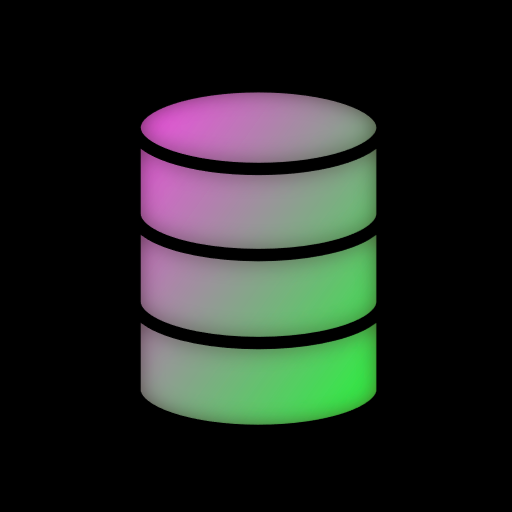

Pretty sure powershell had a F7 key to show a history window. Looks like that might have carried over to Windows Terminal.


Pretty sure powershell had a F7 key to show a history window. Looks like that might have carried over to Windows Terminal.


Yes, ULA are one of the exceptions I mentioned. It covers fc00::/7 which is fc00 to fdff, though I believe most use just the top half. I use one for an intermediate network between my edge router and my primary firewall to not consume one of my limited /64 networks.
I haven’t played with IPV6 NAT much. I know its use is a bit discouraged as NAT was always designed as a stopgap measure for IPV4 exhaustion. It might be a good option if you need additional space and your ISP doesn’t support additional prefixes. Just keep in mind that if you use these in DNS, they won’t be accessible externally.


Its a bit complicated and depends on your ISPs support level.
If your ISP supports basic IPv6 they will likely use SLAAC or DHCPv6 to advertise the /64 that any directly connected devices, like your router, can use (/64 being the default size for a single LAN segment, even between point-to-point connections). If you have devices behind that router that want to use IPv6, you will need additional prefixes. The most common method nowadays is to use Prefix Delegation (DHCPv6-PD) where your router will ask the upstream router for an additional routeable prefix which you will use on another interface of the router. The RFC for prefix delegation recommends a /48, but many ISPs are not delegating that much. I only get half of a /60 from my ISP’s modem.
If the ISP just provides you a static routeable prefix, then you would just assign that to your router’s interface and enable SLAAC/DHCPv6 to give out that prefix. This would only need to be configured in a single device and is why they don’t recommend hard coding servers and workstations with IPV6 addresses.
Keep in mind that your router will also need a firewall as all of these IPv6 prefixes are routeable and public. While IPV6 space is quite like finding a needle in a haystack, you could still find yourself having a bad day if you treat it like private IPV4 space.
The end result though is that you would setup DNS so that devices register their IPv6 addresses and it just works. There’s also the MDNS protocol that supports IPv6 which will do segment-local resolution for device names.


On one hand you definitely don’t want to be assigning manual/static IPv6 to all your devices because if your prefix ever changes you’ll have to update it everywhere. IPv6 doesn’t really have a concept of private address space (with a few exceptions). On the other hand most modern IPv6 stacks support dynamic protocols like SLAAC while also assigning a static suffix to the published prefix (e.g. You want :0:0:1234:1 to go to your server, and SLAAC gets the prefix 200x::5678/64 your server would assign itself 200x::5678:0:0:1234:1).
DHCPv6 fixes a lot of these headaches for managed networks by allowing you to reserve specific IPv6 for a given DUID.
IMO, your network, do what you want. I have two jump Raspberry PIs that I have static suffixes so I always know where they are without relying on DNS or whatever. Edit: I apparently misremembered how I had these setup. I use a custom interface up script to take the SLAAC prefix and append the custom suffix to it as a secondary IP.


You’ll probably have to provide the netmask info for us to review. If you’re using /24 then those all reside in the same network so I would expect them to be in the same broadcast domain.
If you have mismatched netmasks that could be trying to route traffic to the gateway which then reflects back. Ensure your devices have the same network, netmask and broadcast ip (e.g. 192.168.1.0/24 will have broadcast ip of 192.168.1.255)


I was thinking this too, if you have an open-ended 4x slot it can fit a 16x card but only runs at 4x.
TBH if you’re running 10Gb you may want to look for a board with on-board 10Gb rather than a PCIE which will save you the slot. My HP server has a swapable daughter board for the nic so you can chose 4x1Gb or 4x10Gb.


For my part, to get Jellyfin to recognize some of my shows/movies properly I had to export the Metadata which properly detected most. If that doesn’t work Jellyfin might be ignoring them due to decoding issues. Would be worth checking the log while rescanning to see if there’s an error or access issue.


29% of 112 and 60% of 170 is 134, which is 47.7% of the total. Math checks out.


I purchased an enclosed rack like this many years ago, but I’m glad I never used it. They are a pain to cool properly. Most of these types of rack will not come fully enclosed, with the front or sides being steel but with air holes for good airflow. The one I purchased was a StarTech.
Racks are usually counted in height by U (unit) which is a standard server height, so look for something in the 12-25U range. https://en.m.wikipedia.org/wiki/Rack_unit
I believe the one I purchased was a 32U with wheels and it was around 1500 USD plus freight (it arrived on a pallet).
What you’re likely looking for is a wall mount rack. Wall mounted racks are going to be the same width (usually 19" 2 or 4-post) but will vary by depth. You won’t be able to put a full length server in a wall mount as it’s designed for half-depth network equipment, but should serve your stated need quite well. 19" shelf mounts are available too.
Some examples: https://www.startech.com/en-us/server-management/rk1232walhm https://www.startech.com/en-us/server-management/cabshelfv


Check the note below that section. It will attempt to unlock all root partitions with the same passphrase entered, so if you setup the second drive with encryption it will unlock alongside your primary drive. With LVM on top you should then be able to expand the VG to the second drive to add space or redundancy to your LVs.
If the second drive has subpartitions (LVM on bottom, encryption on top) it looks like you’ll need additional setup (section 7.2.2) https://wiki.archlinux.org/title/Dm-crypt/Specialties#Modifying_the_encrypt_hook_for_multiple_partitions


The amount of Windows bashing in this thread is hilarious, for what amounts to Enterprise grade DNS-over-TLS with additional whitelisting. Doesn’t help the home user, but likely won’t break home users internet access either.


Perhaps they should ask Copilot how their templating system works.


I had analytics turned on (new phone and didn’t check it before), and the app info only shows 76 kB have been transferred in the past 30 days. Seems pretty reasonable, but I disabled it anyways out of principal.


The log translated binary data received to hex escape codes so that your log is not dangerous when you cat it. This could be misconfigured port or some sort of scan (e.g. Someone is trying to https to your http port and it wants to negotiate a SSL/TLS session). The IP listed is a OVH server and appears to be running IIS on http.


Some locations have very variable wind conditions so an airport may have runways in many different directions. For example, Wittman where they have Oshkosh has 4 runways in all different directions. http://img.airnav.com/aptdiag/w240/02539.gif?v=OY0UYO
Larger airports typically like to have more traffic throughput by having many parallel runways, like Atlanta which has all 5 runways facing east/west. This means planes may have to take off/land in crosswind conditions, which is not ideal but can be done. https://img.airnav.com/aptdiag/w240/02655.gif?v=Q88169


From your diagram it looks like the categories could be different for either Income or Expenses, so having them in separate tables makes sense for me. If you combine them then you’ll need separate fields for the categories, which would end up being NULL for certain types.
EDIT: Having another think about it, you could have a single category table with a type, then a single transactions table. Then the transactions could have a single category field.
As an aside, these are the client logs, check the /var/log/ auth.log or secure files or journalctl to see if the server logged why the access was denied.


You seem to be misinformed on how the internet works. Nothing is “free”. ISPs have to buy equipment, pay for expensive physical connectivity (without disturbing existing infrastructure), and usually have to deal with constant, ever increasing bandwidth requirements.
I’m all for a bit of net neutrality, but ISPs tend to get a lot of flak for policies like this, for seemingly no reason. For example, let’s say ISP A and Upstream B have a mutual bandwidth sharing policy (called Peering) where both sides benefit equally from the connectivity. ISP A determines that N is using all the bandwidth to Upstream B. ISP A has three options: N gets all the bandwidth to Upstream B (disturbing other traffic to/from that network), N has to be throttled to allow all traffic equally, or ISP A and Upstream B need to expand their network again (new equipment, new physical links) which will cost a lot of money. N doesn’t even pay ISP A or Upstream B, they just pay their ISP C. In the end, ISP A has to throttle N, and N is the one who had to expand/change their business model to deliver content to their customers. They had to go out and buy services from many upstream providers to even the load and designed a solution to install Caching boxes inside each ISP’s datacenter so their traffic could reach end users without going upstream.


You’ve always been able to run unsigned or unpackaged add-ons with developer mode. What’s wrong with that? This only affects packages uploaded to AMO.
Make or find yourself a cart to drag around (g or G to drag it). It it doesn’t have wheels it’ll be quite loud. Sound = attraction = death in most cases.
Don’t bother with cars for a long while, even one that actually runs. They take a lot to maintain and cause a lot of noise (see above). You’re better off starting with a bike for midrange transportation (or if using mods a foldable bike).
When you start building or find a nice base area, make a crafting nook and drop all your items nearby to it. When crafting you can pull ingredients from 1-2 tiles adjacent.